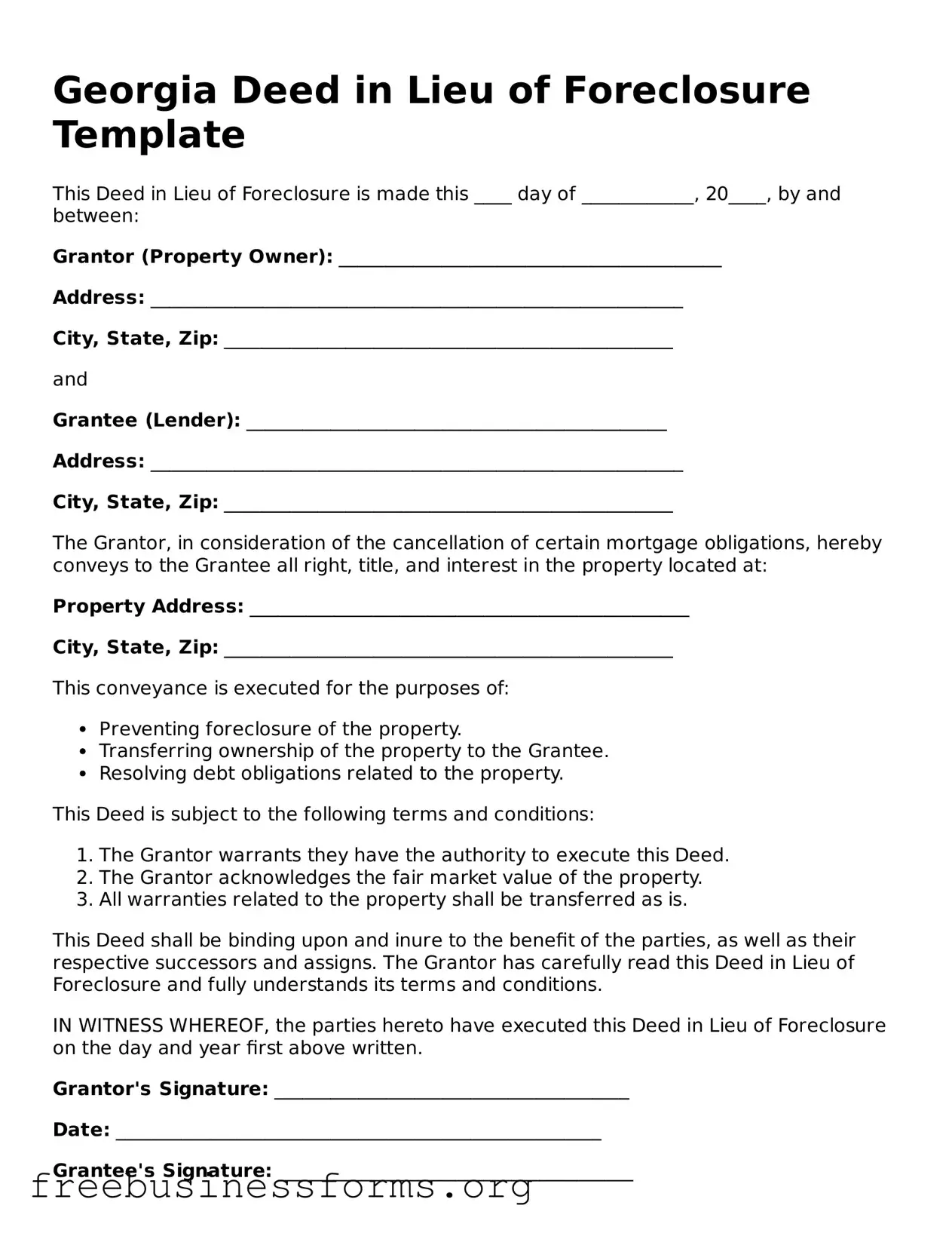Georgia Deed in Lieu of Foreclosure Template
This Deed in Lieu of Foreclosure is made this ____ day of ____________, 20____, by and between:
Grantor (Property Owner): _________________________________________
Address: _________________________________________________________
City, State, Zip: ________________________________________________
and
Grantee (Lender): _____________________________________________
Address: _________________________________________________________
City, State, Zip: ________________________________________________
The Grantor, in consideration of the cancellation of certain mortgage obligations, hereby conveys to the Grantee all right, title, and interest in the property located at:
Property Address: _______________________________________________
City, State, Zip: ________________________________________________
This conveyance is executed for the purposes of:
- Preventing foreclosure of the property.
- Transferring ownership of the property to the Grantee.
- Resolving debt obligations related to the property.
This Deed is subject to the following terms and conditions:
- The Grantor warrants they have the authority to execute this Deed.
- The Grantor acknowledges the fair market value of the property.
- All warranties related to the property shall be transferred as is.
This Deed shall be binding upon and inure to the benefit of the parties, as well as their respective successors and assigns. The Grantor has carefully read this Deed in Lieu of Foreclosure and fully understands its terms and conditions.
IN WITNESS WHEREOF, the parties hereto have executed this Deed in Lieu of Foreclosure on the day and year first above written.
Grantor's Signature: ______________________________________
Date: ____________________________________________________
Grantee's Signature: ______________________________________
Date: ____________________________________________________
